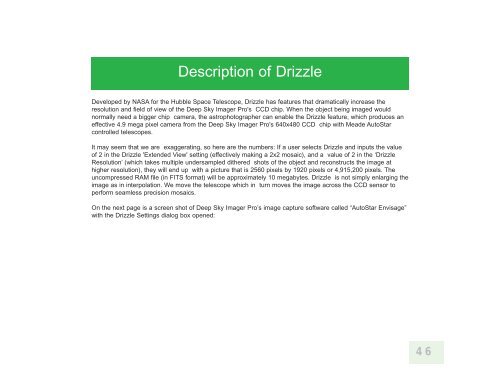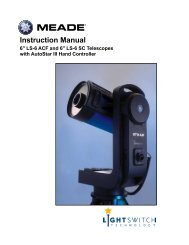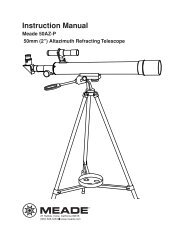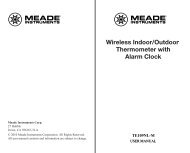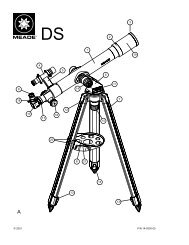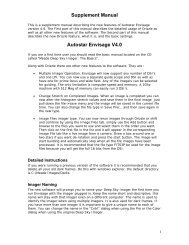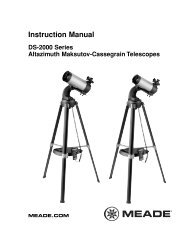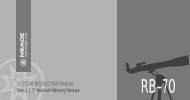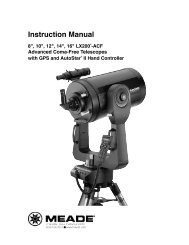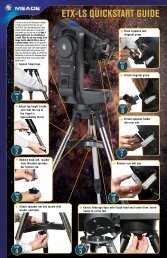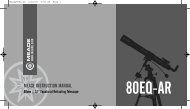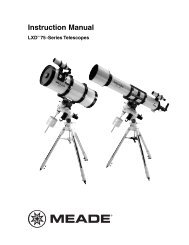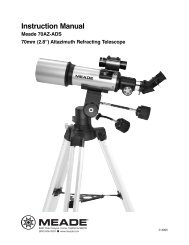Deep Sky Imager™: The Basics - Meade
Deep Sky Imager™: The Basics - Meade
Deep Sky Imager™: The Basics - Meade
- TAGS
- deep
- basics
- meade
- www.meade.com
Create successful ePaper yourself
Turn your PDF publications into a flip-book with our unique Google optimized e-Paper software.
Description of Drizzle<br />
Developed by NASA for the Hubble Space Telescope, Drizzle has features that dramatically increase the<br />
resolution and field of view of the <strong>Deep</strong> <strong>Sky</strong> Imager Pro's CCD chip. When the object being imaged would<br />
normally need a bigger chip camera, the astrophotographer can enable the Drizzle feature, which produces an<br />
effective 4.9 mega pixel camera from the <strong>Deep</strong> <strong>Sky</strong> Imager Pro's 640x480 CCD chip with <strong>Meade</strong> AutoStar<br />
controlled telescopes.<br />
It may seem that we are exaggerating, so here are the numbers: If a user selects Drizzle and inputs the value<br />
of 2 in the Drizzle 'Extended View' setting (effectively making a 2x2 mosaic), and a value of 2 in the ‘Drizzle<br />
Resolution’ (which takes multiple undersampled dithered shots of the object and reconstructs the image at<br />
higher resolution), they will end up with a picture that is 2560 pixels by 1920 pixels or 4,915,200 pixels. <strong>The</strong><br />
uncompressed RAM file (in FITS format) will be approximately 10 megabytes. Drizzle is not simply enlarging the<br />
image as in interpolation. We move the telescope which in turn moves the image across the CCD sensor to<br />
perform seamless precision mosaics.<br />
On the next page is a screen shot of <strong>Deep</strong> <strong>Sky</strong> Imager Pro’s image capture software called “AutoStar Envisage”<br />
with the Drizzle Settings dialog box opened:<br />
46


